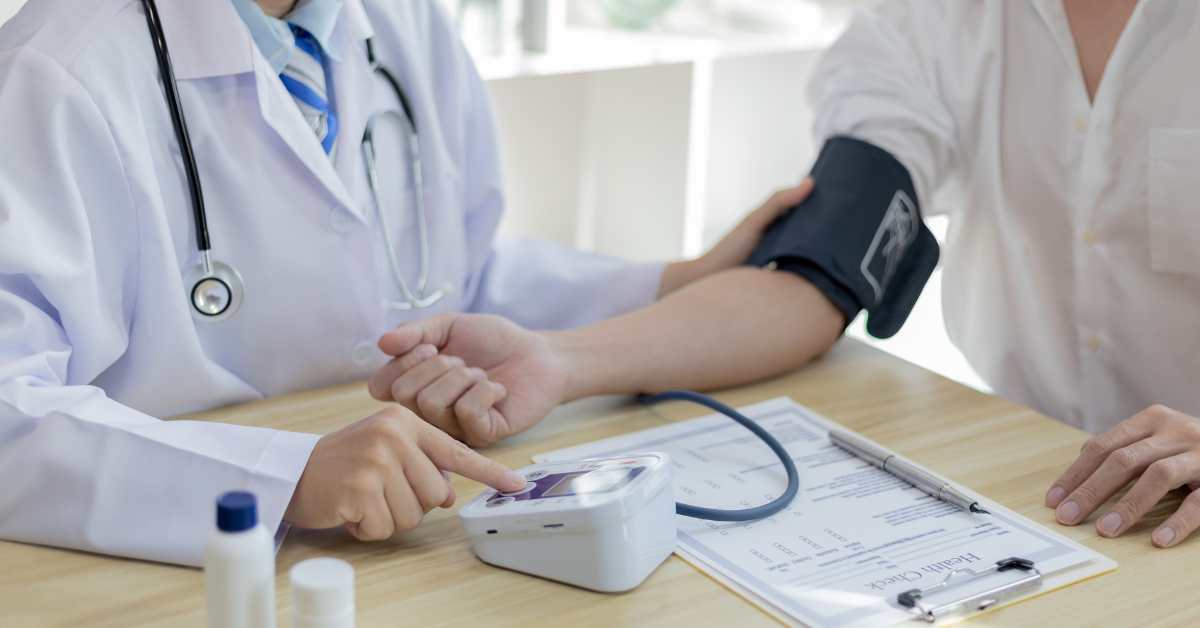General anesthesia is often necessary for various medical procedures, but as with all medications, the drugs used for general anesthesia can have unwanted effects on the body. Many parents worry about the short and long term effects of general anesthesia. The good news is that anesthesia is generally regarded as quite safe (1). That said, understanding how to support your child’s body in eliminating these drugs can help in managing their general toxic load and keep their bodies functioning at their best.
This article discusses the main drugs used in general anesthesia for children, their half-lives, and the detoxification pathways involved. It also shares detoxification strategies and some of the specific vitamins and herbs that can support the body in dealing with anesthesia.
Understanding General Anesthesia
General anesthesia involves the use of multiple drugs to achieve unconsciousness, pain relief, muscle relaxation, and amnesia. In children, general anesthesia is often used for surgeries, dental procedures, and other medical procedures that would require a child to be completely still, such as imaging like MRIs or specialized injection therapies such as lumbar punctures.
Commonly Used Drugs in Pediatric Populations & How the Body Detoxifies Them
Commonly used drugs in pediatric populations include propofol, sevoflurane, fentanyl, midazolam, ketamine, and nitrous oxide (2). Each of these drugs has unique properties and are processed by the body in different ways.
To learn how detoxification works, read: How Does Detoxification Work? Understanding Phase I, Phase II, and Phase III Detoxification
Propofol
Propofol is a widely used intravenous anesthetic agent known for its rapid onset and short duration of action. Propofol has a bi-phasic half-life, with an initial half-life of around 40 minutes and a terminal half-life of 4 to 7 hours (3). This means that initially, the drug concentration in the blood decreases rapidly, but then it takes a longer time to eliminate the remaining amount from the body. The significance of different half-lives is that they determine how quickly a drug is cleared from the body, impacting both the duration of its effects and the time needed for detoxification. Propofol is primarily metabolized in the liver through conjugation reactions (3), and its use may deplete the levels of the antioxidant glutathione (4).
To support detoxification from propofol, we focus on glutathione. Glutathione can be taken in supplement form, but it is not always absorbed effectively. Rather, increasing vitamin C intake can support the body in creating more glutathione (5). This can be achieved through supplements or by consuming foods rich in vitamin C. N-acetylcysteine (NAC) is derived from the amino acid L-cysteine and acts as a precursor to glutathione, making it another effective supplement for boosting glutathione levels. Foods rich in sulfur, such as garlic, onions, and cruciferous vegetables, may also support glutathione production (6). Milk thistle is an excellent herbal choice as it promotes liver function and glutathione production (7).
Sevoflurane
Sevoflurane is a commonly used inhalation anesthetic that is rapidly eliminated via exhalation, with a half-life of less than 15 minutes (8). Although primarily exhaled unchanged, some metabolism occurs in the liver (8). While significant nutrient depletion is rare, sevoflurane can lead to oxidative stress.
Supporting detoxification from sevoflurane involves ensuring adequate hydration to support exhalation and kidney function. Your child will need to be fasting the day of the procedure, and most of the time, children will be given IV fluids during anesthesia, which will help them stay hydrated. Once your child is off IV fluids, encourage them to keep their liquid intake up. Homemade popsicles are great for increasing fluid intake while simultaneously soothing any throat hoarseness that may occur post anesthesia.
Fentanyl
Fentanyl, a potent opioid analgesic, has a half-life of 2 to 4 hours and is metabolized in the liver by CYP3A4 enzymes (9).
Supporting CYP3A4 enzyme function is helpful for efficient phase I detoxification (10). Zinc deficiency can prevent CYP enzymes from functioning properly (11), potentially leading to inefficient detoxification. To support detoxification from fentanyl, focus on providing zinc-rich foods before and after the procedure. Zinc rich foods include oysters, poultry, red meat, beans, nuts, whole grains and some dairy products. Zinc can also be consumed as a supplement.
As with propofol and sevoflurane, it is also helpful to focus on antioxidant intake to combat oxidative stress, and to consume cruciferous vegetables for general liver support.
Midazolam
Midazolam is a benzodiazepine used for its sedative properties, with a half-life of 1.5 to 3 hours (12). Like fentanyl, it is metabolized in the liver by CYP3A4 enzymes (12). Because Midazolam can also impact GABA (gamma-aminobutyric acid) (12), a neurotransmitter in the brain responsible for reducing neuronal excitability throughout the nervous system, magnesium supplementation may be helpful as it supports neurotransmitter balance and muscle relaxation (13).
Ketamine
Ketamine is an anesthetic agent with a half-life of 2.5 to 3 hours, metabolized in the liver by CYP2B6 and CYP3A4 enzymes (14). We already know that CYP3A4 enzymes are supported by adequate zinc intake, sulfur-containing vegetables, and milk thistle, and that antioxidants can help manage oxidative stress (10).
These same nutrients are supportive of CYP2B6 enzymes, as are amino acids (15,10). Amino acids from proteins are necessary for the synthesis of many enzymes, including CYP2B6. Knowing this, we can plan our meals post-procedure around healthy zinc containing proteins, cruciferous vegetables like broccoli, and plenty of berries for antioxidants. We all know that it can be tricky getting picky kids to eat exactly what we want when we want, so this is a situation where supplementation may be helpful.
Nitrous Oxide
Nitrous oxide, commonly known as laughing gas, is an inhalation anesthetic with a half-life of minutes, meaning that it is rapidly eliminated via exhalation. It is important to be aware that nitrous oxide can deplete vitamin B12 and folate levels (16) and rapidly increase homocysteine levels (17). This is especially relevant for those with known MTHFR mutations (18). Some anesthesiologists are now choosing to avoid nitrous oxide usage in individuals with known MTHFR mutations (19) and instead utilize other inhaled anesthetics such as sevoflurane.
After a procedure where nitrous oxide is used, focus on foods rich in vitamin B12, such as meat and dairy to help counteract depletion. Ensure adequate folate intake through green leafy vegetables, beef liver, and legumes. Supplementation can also help reverse low nutrient status.
Additional Tips for Post-Anesthesia Care
Typically, an IV with fluids is started during the procedure to keep your child hydrated. A benefit of this is that the extra fluids can help flush out the anesthesia drugs. It may be beneficial to continue these fluids as long as possible post-procedure to aid in the elimination process – no rush to get unhooked from that IV if it isn’t bothering your child.
Hospitals often provide popsicles and soda or juice immediately after surgery because nurses need to ensure the patient can tolerate food before discharge. However, the options at the hospital are unfortunately often artificially colored and/or flavored. You may wish to bring your own healthier alternatives. Go for options that are easy to swallow and digest, like apple sauce pouches, organic fruit juice, or even a homemade smoothie in a thermos.
When it comes to managing post-procedure pain, consider using ibuprofen over Tylenol if appropriate, as Tylenol can deplete glutathione, which we know our child needs for effective detoxification. However, if Tylenol is the best or only option available to you, please do not withhold necessary pain management; prioritize your child’s comfort and pain relief. Always discuss pain management plans with your doctor.
To learn more about pain medication, read this article: Are Over The Counter Pain Medications Safe?
Tips for Supporting Detoxification in Children
Our bodies are naturally detoxifying all the time. To support this innate ability to detoxify, we can encourage our kids to drink plenty of water to support kidney function and toxin elimination. Additionally, providing a nutrient-rich diet high in fruits, vegetables, and lean proteins supports overall health, gut health, and liver detoxification. Ensuring adequate sleep is important too, as rest is essential for recovery and detoxification. Encouraging gentle exercise can stimulate circulation and lymphatic drainage, further aiding the detoxification process.
Summary
To effectively support your child’s detoxification after general anesthesia, focus on several key areas. Ensure they receive a nutrient-rich diet that includes plenty of fruits, vegetables, and proteins to support overall health and the detoxification processes. Maintaining proper hydration is important; encourage your child to drink plenty of water to aid kidney function and toxin elimination. Increase their intake of antioxidants, such as glutathione, that are helpful for the reduction of oxidative stress that can occur as a result of general anesthesia.
Post-procedure, continue IV fluids as long as feasible to help flush out anesthesia drugs. When managing pain, consider using ibuprofen over Tylenol if appropriate, since Tylenol can deplete glutathione. Ensure your child gets ample rest, as sleep is essential for recovery and effective detoxification. Encourage gentle exercise to stimulate circulation and lymphatic drainage, further aiding the detoxification process.
References:
- American Society of Anesthesiologists. (2024). Anesthesia Risks and Assessment – Made for This Moment. Made for This Moment | Anesthesia, Pain Management & Surgery. https://www.asahq.org/madeforthismoment/anesthesia-101/types-of-anesthesia/anesthesia-risks/
- Georgia, E. W. G., PharmD Pediatric Pharmacist Children’s Healthcare of Atlanta Atlanta, Georgia Assistant Clinical Professor University of Georgia College of Pharmacy Athens. (n.d.). General Anesthesia in Pediatric Patients. www.uspharmacist.com. https://www.uspharmacist.com/article/general-anesthesia-in-pediatric-patients
- Folino TB, Muco E, Safadi AO, et al. Propofol. [Updated 2023 Jul 24]. In: StatPearls [Internet]. Treasure Island (FL): StatPearls Publishing; 2024 Jan-. Available from: https://www.ncbi.nlm.nih.gov/books/NBK430884/
- Adaramoye, O. A., Akinwonmi, O., & Akanni, O. (2013). Effects of propofol, a sedative-hypnotic drug, on the lipid profile, antioxidant indices, and cardiovascular marker enzymes in wistar rats. ISRN pharmacology, 2013, 230261. https://doi.org/10.1155/2013/230261
- Lee, E., Park, H. Y., Kim, S. W., Kim, J., & Lim, K. (2023). Vitamin C and glutathione supplementation: a review of their additive effects on exercise performance. Physical activity and nutrition, 27(3), 36–43. https://doi.org/10.20463/pan.2023.0027
- Hunter, E. A., & Grimble, R. F. (1997). Dietary sulphur amino acid adequacy influences glutathione synthesis and glutathione-dependent enzymes during the inflammatory response to endotoxin and tumour necrosis factor-alpha in rats. Clinical science (London, England : 1979), 92(3), 297–305. https://doi.org/10.1042/cs0920297
- Valenzuela, A., Aspillaga, M., Vial, S., & Guerra, R. (1989). Selectivity of silymarin on the increase of the glutathione content in different tissues of the rat. Planta medica, 55(5), 420–422. https://doi.org/10.1055/s-2006-962056
- Edgington TL, Muco E, Maani CV. Sevoflurane. [Updated 2023 Jun 5]. In: StatPearls [Internet]. Treasure Island (FL): StatPearls Publishing; 2024 Jan-. Available from: https://www.ncbi.nlm.nih.gov/books/NBK534781/
- Smith H. S. (2009). Opioid metabolism. Mayo Clinic proceedings, 84(7), 613–624. https://doi.org/10.1016/S0025-6196(11)60750-7
- Hodges, R. E., & Minich, D. M. (2015). Modulation of Metabolic Detoxification Pathways Using Foods and Food-Derived Components: A Scientific Review with Clinical Application. Journal of nutrition and metabolism, 2015, 760689. https://doi.org/10.1155/2015/760689
- Xu, Z., Kawai, M., Bandiera, S. M., & Chang, T. K. (2001). Influence of dietary zinc deficiency during development on hepatic CYP2C11, CYP2C12, CYP3A2, CYP3A9, and CYP3A18 expression in postpubertal male rats. Biochemical pharmacology, 62(9), 1283–1291. https://doi.org/10.1016/s0006-2952(01)00776-6
- Lingamchetty TN, Hosseini SA, Saadabadi A. Midazolam. [Updated 2023 Jun 5]. In: StatPearls [Internet]. Treasure Island (FL): StatPearls Publishing; 2024 Jan-. Available from: https://www.ncbi.nlm.nih.gov/books/NBK537321/
- Cuciureanu MD, Vink R. Magnesium and stress. In: Vink R, Nechifor M, editors. Magnesium in the Central Nervous System [Internet]. Adelaide (AU): University of Adelaide Press; 2011. Available from: https://www.ncbi.nlm.nih.gov/books/NBK507250/
- Zanos, P., Moaddel, R., Morris, P. J., Riggs, L. M., Highland, J. N., Georgiou, P., Pereira, E. F. R., Albuquerque, E. X., Thomas, C. J., Zarate, C. A., Jr, & Gould, T. D. (2018). Ketamine and Ketamine Metabolite Pharmacology: Insights into Therapeutic Mechanisms. Pharmacological reviews, 70(3), 621–660. https://doi.org/10.1124/pr.117.015198
- Wang, H., & Tompkins, L. M. (2008). CYP2B6: new insights into a historically overlooked cytochrome P450 isozyme. Current drug metabolism, 9(7), 598–610. https://doi.org/10.2174/138920008785821710
- Campdesuner, V., Teklie, Y., Alkayali, T., Pierce, D., & George, J. (2020). Nitrous Oxide-Induced Vitamin B12 Deficiency Resulting in Myelopathy. Cureus, 12(7), e9088. https://doi.org/10.7759/cureus.9088
- Nagele, P., Tallchief, D., Blood, J., Sharma, A., & Kharasch, E. D. (2011). Nitrous oxide anesthesia and plasma homocysteine in adolescents. Anesthesia and analgesia, 113(4), 843–848. https://doi.org/10.1213/ANE.0b013e31822402f5
- Nagele, P., Brown, F., Francis, A., Scott, M. G., Gage, B. F., & Miller, J. P. (2013). Influence of Nitrous Oxide Anesthesia, B-Vitamins, andMTHFRGene Polymorphisms on Perioperative Cardiac Events. Anesthesiology, 119(1), 19–28. https://doi.org/10.1097/aln.0b013e31829761e3
- Selzer, R. R., Rosenblatt, D. S., Laxova, R., & Hogan, K. (2003). Adverse Effect of Nitrous Oxide in a Child with 5,10-Methylenetetrahydrofolate Reductase Deficiency. New England Journal of Medicine, 349(1), 45–50. https://doi.org/10.1056/nejmoa021867



3 Comments